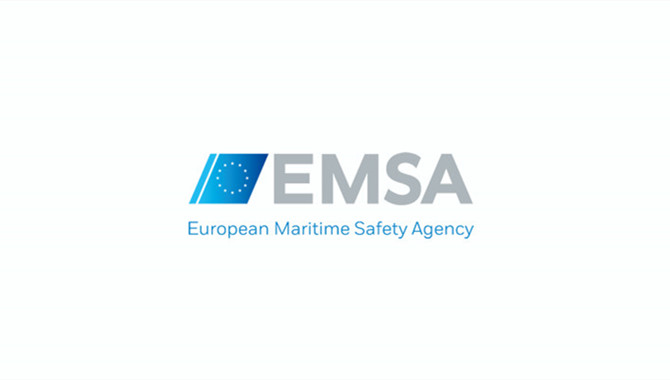 Two decades after the devastating Erika and Prestige accidents, the European maritime safety framework has evolved to become one of the most robust in the world. That's according to the European Maritime Safety Report (EMSAFE), the first ever comprehensive overview of maritime safety in the European Union.
Two decades after the devastating Erika and Prestige accidents, the European maritime safety framework has evolved to become one of the most robust in the world. That's according to the European Maritime Safety Report (EMSAFE), the first ever comprehensive overview of maritime safety in the European Union.
One of the key pillars of the EU safety framework is port state control, which results in over 14 000 vessel checks each year by inspectors in EU ports, complemented by legislative initiatives like the specific EU survey regime for RoPax and high-speed craft, and the obligation for Member States to report and monitor accidents centrally for analysis and development of preventive actions. This legislation supports the implementation and enforcement of international conventions adopted at the International Maritime Organisation (IMO) by addressing specific risks and putting in place a centralised approach in support of maritime safety.
The EMSAFE report, published by the
European Maritime Safety Agency (EMSA) also highlights the assistance that the Agency provides to the European Commission to check the implementation of EU legislation. In this regard, EMSA has carried out more than 300 visits to Member States on behalf of the Commission over the past two decades, as well as more than 300 inspections of EU recognised organisations, to which Member States are increasingly delegating tasks linked to their flag state responsibilities.
In addition, more than 70 inspections of maritime administrations, education, and training institutes in third countries were carried out in the same period, to assist the Commission in assessing compliance with the International Convention on Standards of Training, Certification, and Watchkeeping for Seafarers.
In 2020 alone more than 680 000 calls to EU ports were registered. The exchange of safety information between Member States in areas like dangerous cargo transported, vessel positioning data, and the registration of passengers, is therefore vital. Consequently, EMSA will continue to develop and improve SafeSeaNet, the EU-wide maritime data exchange, to offer facilitation services, simplify the fulfilment of reporting obligations, and support new and revised EU legislation. These developments consolidate the role of SafeSeaNet as the primary platform for maritime safety information in the EU.
EMSAFE is released at a time in which the EU Member State-flagged fleet is experiencing slower growth than that of world fleet (3.4% growth over the past five years as compared to 7% growth for the world fleet). Although the average age of EU Member State-flagged vessels is broadly comparable to that of the world fleet, some ship categories are ageing, including passenger vessels, which have an average age of 28 years.
“Today's report stands testimony to how the EU's efforts to ensure maritime safety have been effective in preventing accidents and ensuring a high level of harmonised safety rules across the Union. At the same time, a single maritime accident can have catastrophic consequences for human life and the marine environment, so continuous vigilance and improvement remain essential. I welcome this worthwhile initiative,which provides an essential guide to the maritime safety situation and the issues with which we are confronted,” said EU Transport Commissioner, Adina Vălean.
“Safety is the cornerstone of all maritime activities. Without safety there can be no sustainability, no security, and no evolution of the maritime transport sector in the EU. Therefore, safety is at the heart of EMSA's work, both now and in the future. But our report makes clear that maritime safety is, and always will be, a joint concern. Only by working together – at international, European, national, policy, industry, and stakeholder level – can we sustain the strong framework we have built over the past twenty years and continue to meet future challenges,” said the Executive Director of EMSA, Maja Markovčić Kostelac
According to the report, maritime safety will continue to pose challenges in the short and medium term, not only in managing the current fleet, but also in the areas of digitalisation, emerging technologies, and sustainability.
· The sector's efforts to reach emission targets as part of the European Green Deal are also linked to maritime safety, especially given that the use of new fuels (hydrogen, methanol, ammonia, and biofuels) and power technologies (batteries and fuel cells) need to be underpinned by adequate safety standards.
· In addition, the number of alternatively fuelled vehicles, including electric cars, increased by 29% between 2019 and 2021 in the EU, meaning that both passenger and cargo ships need to prepare for the safety risks of transporting more of these vehicles.
· The report underlines that although autonomous ships offer new opportunities for industry, they also bring challenges in the regulatory and technical fields, including the need to develop a legal framework, standards, surveys, manoeuvres at sea and in port, and the qualifications of those on board, among others.
The opinions expressed herein are the author's and not necessarily those of The Xinde Marine News.
Please Contact Us at:
media@xindemarine.com


 Ningbo Containerized Freight Index Weekly Commentar
Ningbo Containerized Freight Index Weekly Commentar  Ningbo Containerized Freight Index Weekly Commentar
Ningbo Containerized Freight Index Weekly Commentar  Ningbo Containerized Freight Index Weekly Commentar
Ningbo Containerized Freight Index Weekly Commentar  BIMCO Shipping Number of the Week: Bulker newbuildi
BIMCO Shipping Number of the Week: Bulker newbuildi  Ningbo Containerized Freight Index Weekly Commentar
Ningbo Containerized Freight Index Weekly Commentar  Ningbo Containerized Freight Index Weekly Commentar
Ningbo Containerized Freight Index Weekly Commentar